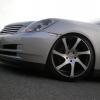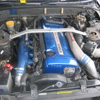Replacing your pushrod tube oil seals in your LS1 V8 (a must read)
Announcements
-
Similar Content
-
Latest Posts
-
By Murray_Calavera · Posted
I've never heard of this before, how does it work? -
By Watermouse · Posted
Silly, You need to edit your posts with some “HA” quotes -
By Dose Pipe Sutututu · Posted
If go with OVO or similar, you can buy electricity off peak periods of the day for next to nothing, i.e. when the sun is out and everyone is exporting and noone is consuming. I'm also planning to join a VPP and sell back during peak hours. Bro science stacks up, and also the battery inverter has a spare MPPT port, so I could add another solar array. I still have the roof space for at least another 7 panels. -
I might need to invest in at least another battery, maybe...as the battery going in is a 19.2kWh, which is larger than I initially thought when I replied, the panels are 10.56kW
-





Recommended Posts
Create an account or sign in to comment
You need to be a member in order to leave a comment
Create an account
Sign up for a new account in our community. It's easy!
Register a new accountSign in
Already have an account? Sign in here.
Sign In Now